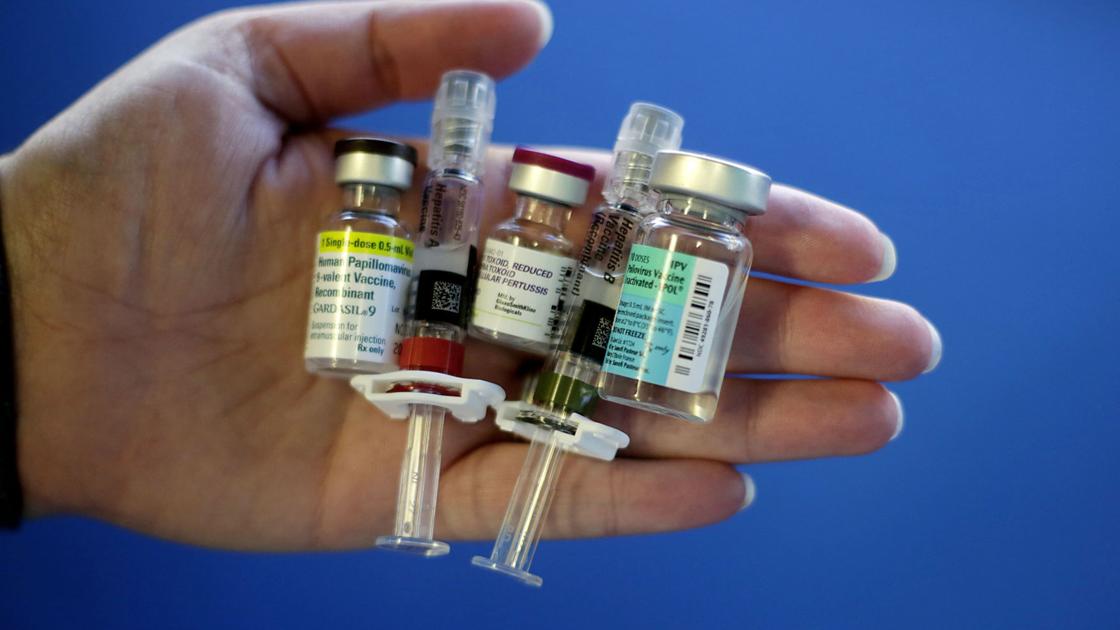Percentage of kindergartners with vaccine exemption up as immunization rate improves in Oklahoma - Tulsa World

The percentage of Oklahoma kindergartners who were up-to-date on their immunizations increased over the previous year while at the same time so did the percentage who claimed an exemption from vaccines, according to a new government report.
Overall, 91.4% of kindergartners were up-to-date on their vaccines when surveyed during the 2018-19 school year, a 1% increase over the prior year, according to an Oklahoma State Department of Health report.
However, the percentage of students claiming an exemption from any vaccine increased from 2.4% to 2.6% during the same time period, the report states. The overall exemption rate was 1.9% in 2016-17.
The increase in the overall exemption rate was driven largely by the public school sector. The percentage of public school students claiming an exemption increased from 1.9% in 2017-18 to 2.4% in 2018-19.
As a smaller percentage of private schools participating in the voluntary survey declined from an all-time high of 59% in 2017-18 to 44% in 2018-19, the overall share of private school students claiming an exemption also declined from 6% to 4.7%, according to the report.
Parents may seek an exemption for their children from vaccinations for medical, personal or religious reasons. The majority of exemptions from vaccinations are for nonmedical reasons, according to state Health Department officials.
“Analysis of this data drives program activities to improve vaccination coverage in our state,” Interim Commissioner of Health Tom Bates said in a written statement. “We appreciate the support from the Oklahoma State Department of Education and the local school officials who contributed to such an important project.
“We know that vaccinations are among the most effective ways to protect against serious diseases.”
Dr. Chris E. Smith, chairman of the Department of Pediatrics at OU Physicians-Tulsa, said in an interview that the 2018-19 vaccination report was encouraging.
“My general feeling is I’m encouraged anytime I see anything that shows our up-to-date (immunization) rates may be increasing,” Smith said.
Still, he voiced concerns about both the survey participation rate among private schools and their overall higher exemption rates.
“I think there’s some really good gains,” Smith said. “We still have some areas to improve on as far as getting the response rate up from all of our schools and all of our kids in Oklahoma.
“I still see that there is a high non-participation rate among many of our private schools.”
Nonmedical exemptions among private schools declined from 4.9% to 4.1%. The medical exemption rate for private school kindergartners decreased from 0.7% to 0.6%.
“Sometimes I think private schools exemption rates may be a little bit higher just because families who pursue exemptions tend to choose private education,” Smith said.
Smith said he was impressed by the amount of detail that was made available to the public by the health department with this report. The detailed information will allow communities to better address ways to increase vaccination rates among children, he said.
The Oklahoma State Department of Health for the first time created an online interactive map to view vaccination rates by county or by individual school.
The Tulsa World in April published an interactive map to display the 2017-18 vaccination data.
Smith said the 91% up-to-date rate for kindergartners is still lower than what pediatricians would like to see.
The state chapter of the American Academy of Pediatrics has set a goal of seeing 95% of the state’s children being up to date on all immunizations, he said.
“We know when we hit 95% that our population of kids will be healthier when it comes to these immunization-related preventable diseases,” Smith said.
The state Health Department conducts the kindergarten vaccination survey annually.
The survey measures the share of students who are up to date for the six vaccines required for children to be enrolled in school.
The share of kindergarten students vaccinated for measles, which have seen a record number of outbreaks nationwide in recent years, increased from 92.9% in 2017-18 to 93.2% in 2018-19.
The survey results are considered preliminary until they are forwarded to the U.S. Centers for Disease Control and Prevention, which compiles the data in a national report.
The data sent to the CDC excludes figures from state charter schools, some of which are the fastest-growing segment of the public school districts.
For instance Epic Charter Schools, the fifth-largest school district in the state, is one of those districts missing from the state report.
Epic Charter Schools maintains both a virtual school program — Epic Charter One-on-One School, where students complete all assignments outside of a traditional classroom setting and a “blended” program where students living in Tulsa and Oklahoma counties may attend classes with other students while also completing work from home.
About 21% of students enrolled in Epic’s blended program were exempt from one or more vaccinations during the 2017-18 school year, according to the Health Department survey.
A school spokesperson said in April that about 9.3% of Epic Charter kindergartners in the blended program were exempt in the 2018-19 school year.
Epic Charter One-on-One students were not surveyed along with other virtual school districts in the state. The bulk of Epic Charter students attend the virtual school.
https://ift.tt/2Pv4HVJ


Comments
Post a Comment